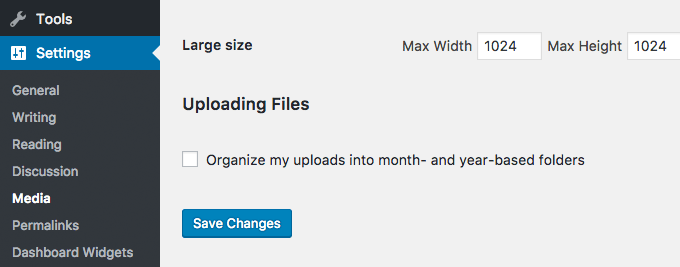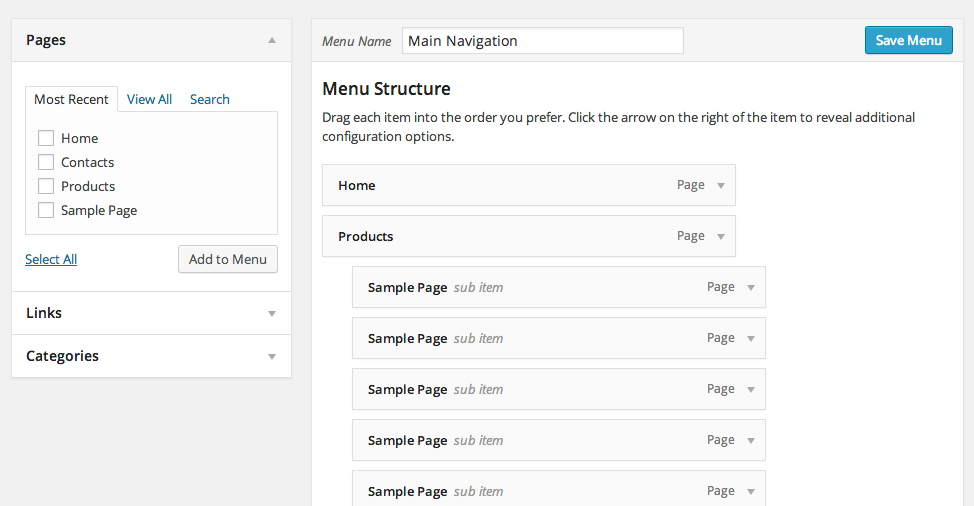Recently WordPress sites have been getting hammered with random-string comment spam. The attackers are clever, using random text strings for every vector except the payload, which usually is the URL used for the comment’s Name link. But for these weird comment spams, the apparent payload is the email address. It’s the only part of the comment that’s not made up of random gibberish. Continue reading »

WordPress 5.7 features a new Robots API that provides filter-based control over the robots meta tag. So if your site is running WordPress 5.7 or better, you will notice a new <meta /> tag included in the <head></head> section of your web pages. By default, the meta tag added by WordPress has a value of max-image-preview:large, which is fine IF it is the only robots meta tag on the page. If your site already has its own meta robots tag, […] Continue reading »

By now most have heard about the WP Sitemaps feature introduced in WordPress version 5.5. From what I’ve read most existing sites that needed a sitemap already had one via one of the many free sitemap plugins. But for new WordPress sites going forward, having all the sitemap code in the WordPress core now means that new sites have the option of rolling with the default WordPress sitemaps, or use a dedicated plugin to do the job. This post is […] Continue reading »

WordPress 5.5 and beyond features built-in sitemaps that are enabled by default. For new users and sites this may be a good thing. Now users don’t have to bother with thinking about how to implement a sitemap. Like with Privacy control, WordPress just does it for you automagically. BUT for the millions of sites that already have a sitemap thanks to any of the excellent and free sitemap plugins — that’s like maybe 5–10 million websites — well congratulations you […] Continue reading »
![[ WordPress Ultimate Comment Blacklist ]](https://perishablepress.com/wp/wp-content/images/2019/wordpress-comment-blacklist.jpg)
How do YOU stop comment spam? If you’re like a lot of WordPress users, you just grab another plugin or two and call it good. I mean after all, plugins like Akismet work great at stopping spam. The only downside is that, well, you’re relying on another plugin. And that’s fine for folks who just wanna “get ’er done”, although each active plugin requires additional maintenance and server resources. Continue reading »

In this tutorial, I’m going to walk you through how you can add a new menu in WordPress Admin Area, where your users will be able to import any demo content — including widgets, their positions and navigation as well — by a single click. The code follows the best WordPress practices, uses WP Filesystem for file management, includes escaping and all text strings are prepared for translation. It also passes the WordPress theme check plugin! Continue reading »
![[ WordPress: Developing Secure WordPress Sites ]](https://perishablepress.com/wp/wp-content/images/2016/secure-wordpress-sites.png)
After months of preparation and production, my new video course on developing secure WordPress sites is now available at Lynda.com. This is my second video course on securing WordPress; the first one was originally launched in 2011 and remained in Lynda’s library for over five years. I received a lot of great feedback on the course, and so I jumped on the opportunity to do another one. If there is one thing that I enjoy doing, it’s helping people with […] Continue reading »
![[ Google Webmaster Tools: WP-Mix.com ]](https://perishablepress.com/wp/wp-content/images/2016/google-performace_wpmix.gif)
Following up on my recent performance report with essentially some conclusive results. Turns out that the reported issue is related more directly to the version of PHP than to the version of WordPress. So in other words, WordPress runs a bit faster on newer versions of PHP. As explained previously, after I upgraded my sites to WordPress 4.4, Googlebot reported slightly longer load times for my pages. The slower loading average was seen across numerous sites, and it looked like […] Continue reading »
![[ Google Webmaster Tools: WP-Mix.com ]](https://perishablepress.com/wp/wp-content/images/2016/google-performace-wpmix.gif)
Just wanted to share a mysterious trend reported for my sites by Google Webmaster Tools, and ask if anyone else is seeing the same pattern. It looks like it’s related to the WordPress 4.4 update, but I’m not 100% sure, so putting the data out there in hopes that others can help shed some light on the issue.. Continue reading »
![[ Blackhole for Bad Bots ]](https://perishablepress.com/wp/wp-content/images/2016/blackhole-bad-bots.jpg)
Image Courtesy NASA/JPL-Caltech. Update: Pro version now available! Check out Blackhole Pro » Finally translated my Blackhole Spider Trap into a FREE WordPress plugin. It’s fun, fast, flexible, and works silently behind the scenes to protect your WordPress-powered site from malicious bots. Here are some of the features: Continue reading »

In this tutorial I am going to show you how to build a pure CSS drop down menu in WordPress. I will walk you through the steps of creating a menu in WordPress, customizing it with CSS, and then printing the menu in your theme file. This tutorial requires that you have access to edit your WordPress theme files and also a basic understanding of HTML and CSS. I will walk through the process step-by-step so don’t worry if you […] Continue reading »
![[ WordPress Plugin: GA Google Analytics ]](https://perishablepress.com/wp/wp-content/images/2012/ga-google-analytics.png)
I’ve joked that there a million different Google Analytics WordPress plugins available, but I’ve never been able to find one that’s just dead-simple, plug-n-play, and with clean code and markup, so I wrote my own that does just that: a no-frills way to add the new Google Analytics asynchronous tracking code to all pages on your WordPress-powered site. This analytics plugin is lightweight, fast, and now has over 50,000 80,000 active users via WordPress.org. Continue reading »
![[ Screenshot: Comment Spam in Moderation ]](https://perishablepress.com/wp/wp-content/images/2011/spam-characters.gif)
Quick WordPress tip for easily and quietly blocking a ton of comment spam. Akismet and other programs are good at catching most spam, but every now and then a bunch of weird, foreign-language spam will sneak past the filters and post live to your site. Here’s a good example of the kind of stuff that’s easy to block: Continue reading »
![[ Better Robots.txt Rules for WP ]](https://perishablepress.com/wp/wp-content/images/2011/better-seo-robots-txt.jpg)
Cleaning up my files during the recent redesign, I realized that several years had somehow passed since the last time I even looked at the site’s robots.txt file. I guess that’s a good thing, but with all of the changes to site structure and content, it was time again for a delightful romp through robots.txt. This post summarizes my research and gives you a near-perfect robots file, so you can copy/paste completely “as-is”, or use a template to give you […] Continue reading »
With the recent Feedburner service outage, many sites across the Web experienced severe drops in their Feedburner subscriber counts. Apparently, Google is requiring all Feedburner accounts to be transferred over to Google by the end of February. In the midst of this mass migration, chaotic subscriber data has been reported to include everything from dramatic count drops and fluctuating reach statistics to zero-count values and dreaded “N/A” subscriber-count errors. Obviously, displaying erroneous subscriber-count data on your site is not a […] Continue reading »
Ever wanted to provide automatic language translations of your web pages without installing another plugin? Here is a valid, SEO-friendly technique that takes advantage of Google’s free translation service. All you need is a PHP-enabled server and you’re good to go. Just copy and paste the following code into the desired location in your page template and enjoy the results. Once in place, this code will produce translation links for eight common languages for every page on your site. Grab, […] Continue reading »



![[ WordPress Ultimate Comment Blacklist ]](https://perishablepress.com/wp/wp-content/images/2019/wordpress-comment-blacklist.jpg)

![[ WordPress: Developing Secure WordPress Sites ]](https://perishablepress.com/wp/wp-content/images/2016/secure-wordpress-sites.png)
![[ Google Webmaster Tools: WP-Mix.com ]](https://perishablepress.com/wp/wp-content/images/2016/google-performace_wpmix.gif)
![[ Google Webmaster Tools: WP-Mix.com ]](https://perishablepress.com/wp/wp-content/images/2016/google-performace-wpmix.gif)
![[ Blackhole for Bad Bots ]](https://perishablepress.com/wp/wp-content/images/2016/blackhole-bad-bots.jpg)

![[ WordPress Plugin: GA Google Analytics ]](https://perishablepress.com/wp/wp-content/images/2012/ga-google-analytics.png)
![[ Screenshot: Comment Spam in Moderation ]](https://perishablepress.com/wp/wp-content/images/2011/spam-characters.gif)
![[ Better Robots.txt Rules for WP ]](https://perishablepress.com/wp/wp-content/images/2011/better-seo-robots-txt.jpg)
